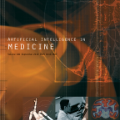Forthcoming 5G New Radio (NR) systems will be asked to handle a huge number of devices accessing or delivering "resource-hungry" and high-quality services. In view of this, the new 5G Radio Access Technology (RAT) aims to support, in next releases, Multimedia Broadcast/Multicast Service Single Frequency Network (MBSFN) to enable the simultaneous delivery of the same content to a set of users covered by different cells. According to MBSFN, all cells belonging to the same MBSFN Area are synchronized in time and the MBSFN transmission occurs over the same radio resources. In such a way, the same content flow is delivered by several cells to all the receivers in the MBSFN Area. A further means to enhance the network coverage and provide high data rate and low latency in future 5G-enabled MBSFN networks is Device-to-Device (D2D) connectivity. Along these lines, in this paper we propose a D2D-aided MBSFN Area Formation (D2D-MAF) algorithm to dynamically create MBSFN Areas with the aim to improve the system aggregate data rate while satisfying all user requests. The proposed D2D-MAF foresees that users could receive the service through either MBSFN, or D2D, or unicast transmissions. Performance evaluation results, carried out under a wide range of conditions, testify to the high effectiveness of the proposed algorithm.
翻译:5G新电台(NR)系统将被要求处理大量获取或提供“资源饥饿”和高质量服务的装置,因此,5G无线电接入技术(RAT)新版的5G无线电接入技术(RAT)的目的是在下一期发布中支持多媒体广播/多媒体服务单一频率网络(MBSFN),以便同时向不同单元覆盖的一组用户提供同样内容。根据MBSFF, 所有属于MBSFF新区的所有细胞都及时同步,而MBSFFF新区传输的频率也在同一无线电资源上。这样,几个单元向MBSFF新区的所有接收者提供同样的内容流动。 今后5GMBSFM的5MBS单一频率网络将加强网络的网络覆盖面,提供高数据率和低密度,这是D2D连接的装置。 与这些线路一样,我们在此文件中建议D2D辅助MBSFFF新区的所有单元将进行动态创建MBSF区,目的是提高MBSMSMS的系统总体数据传输率,同时根据用户的要求,通过MBSMMMDMDMDMA提供所有传输服务。




